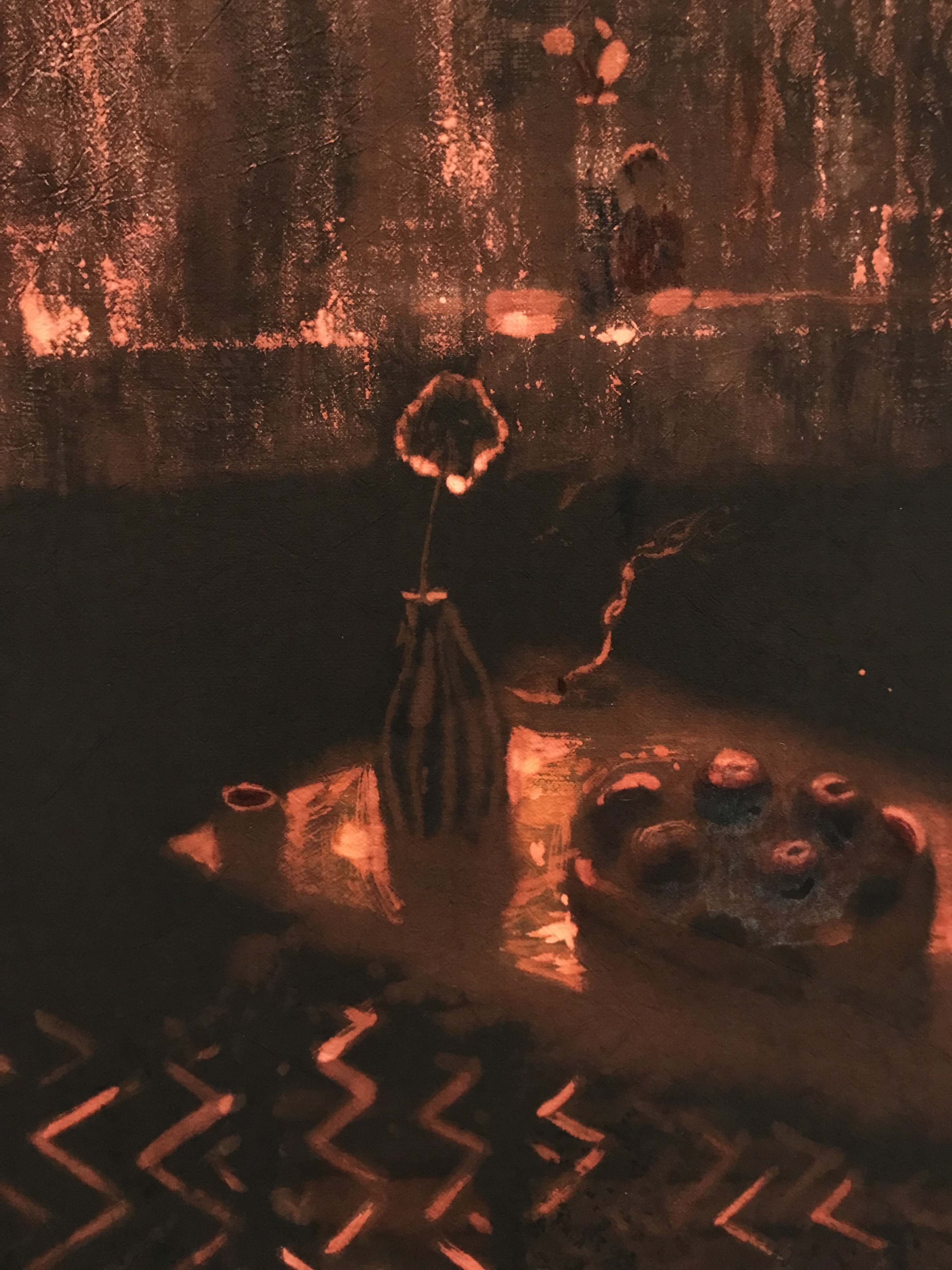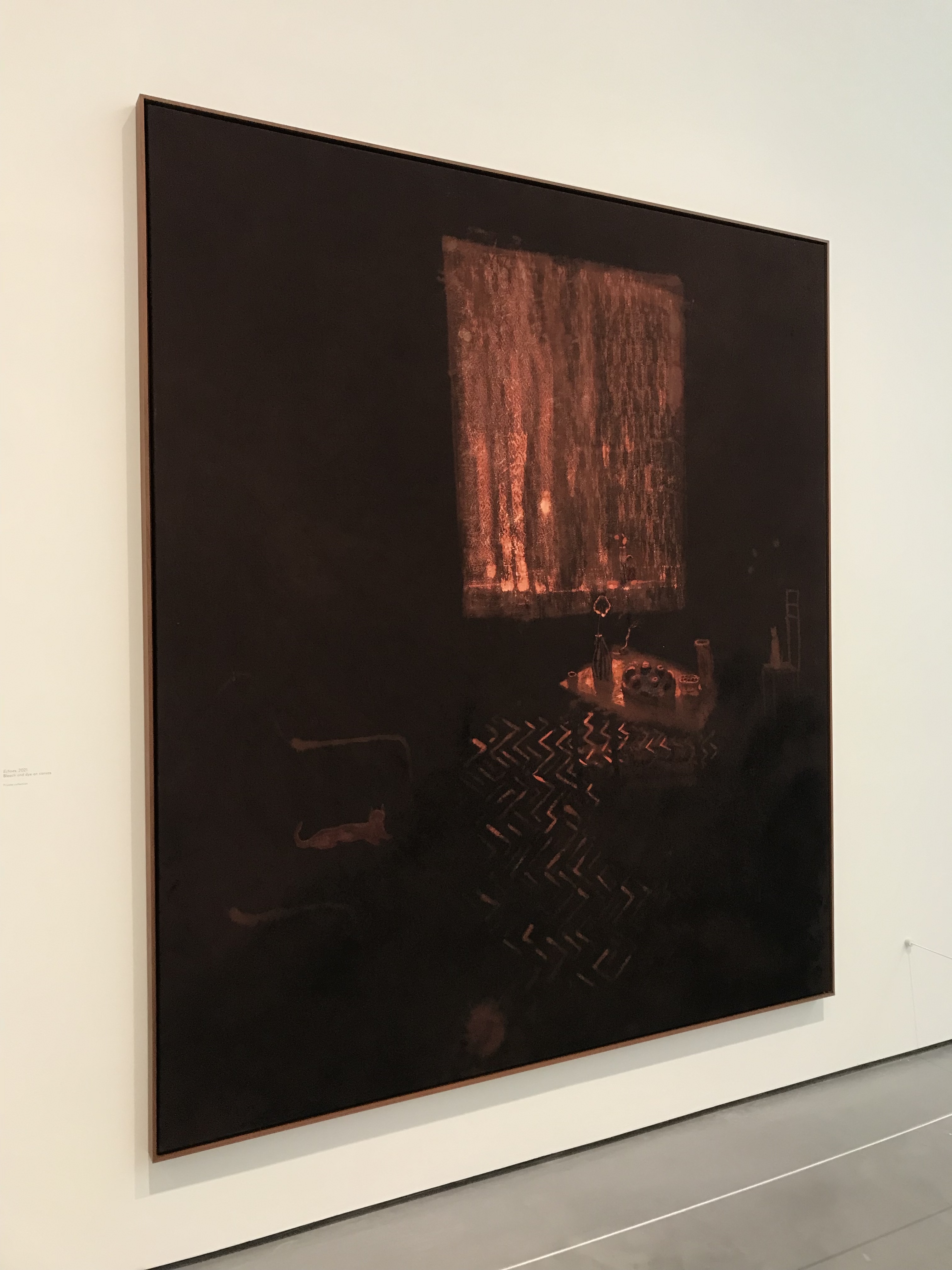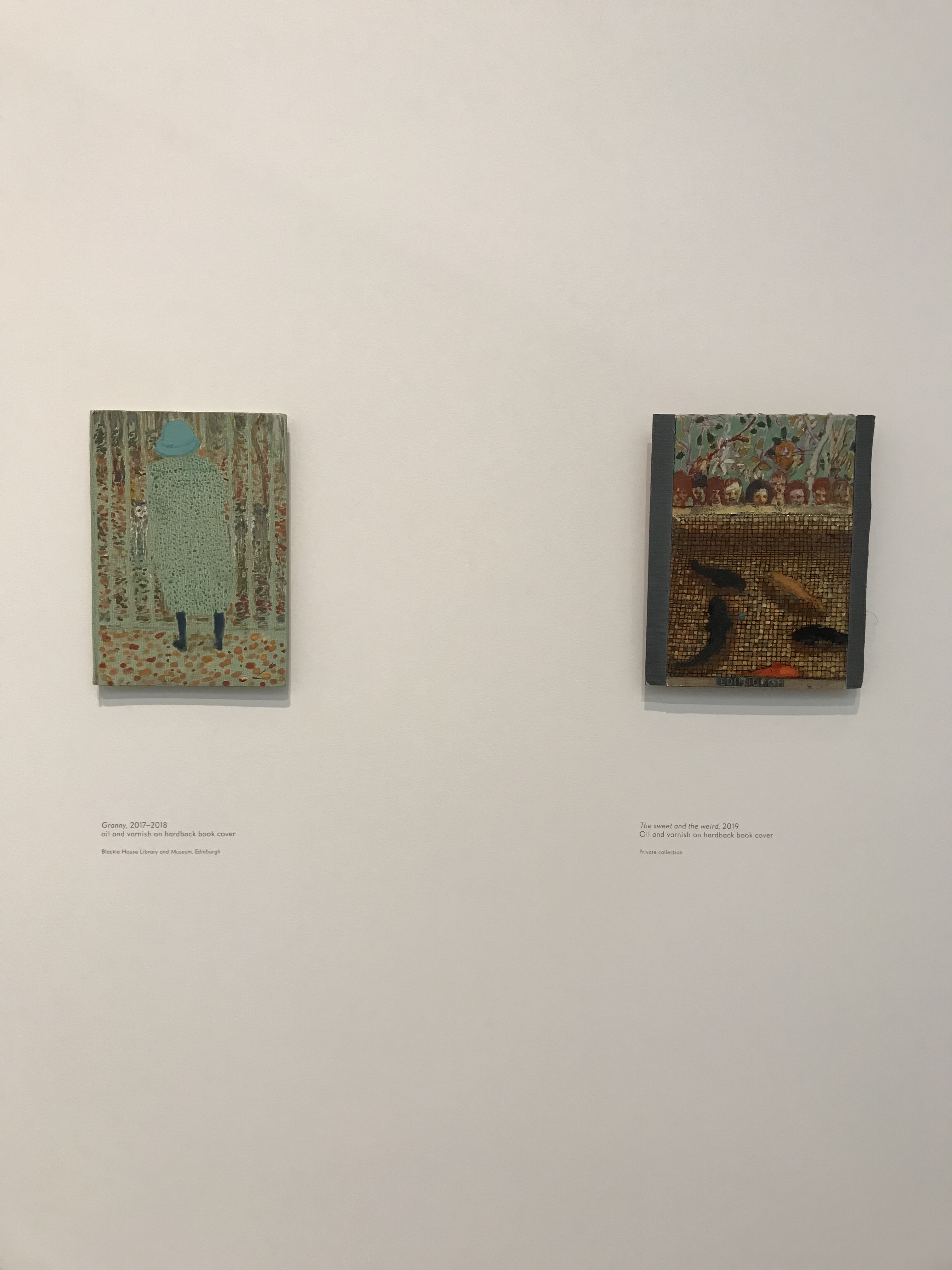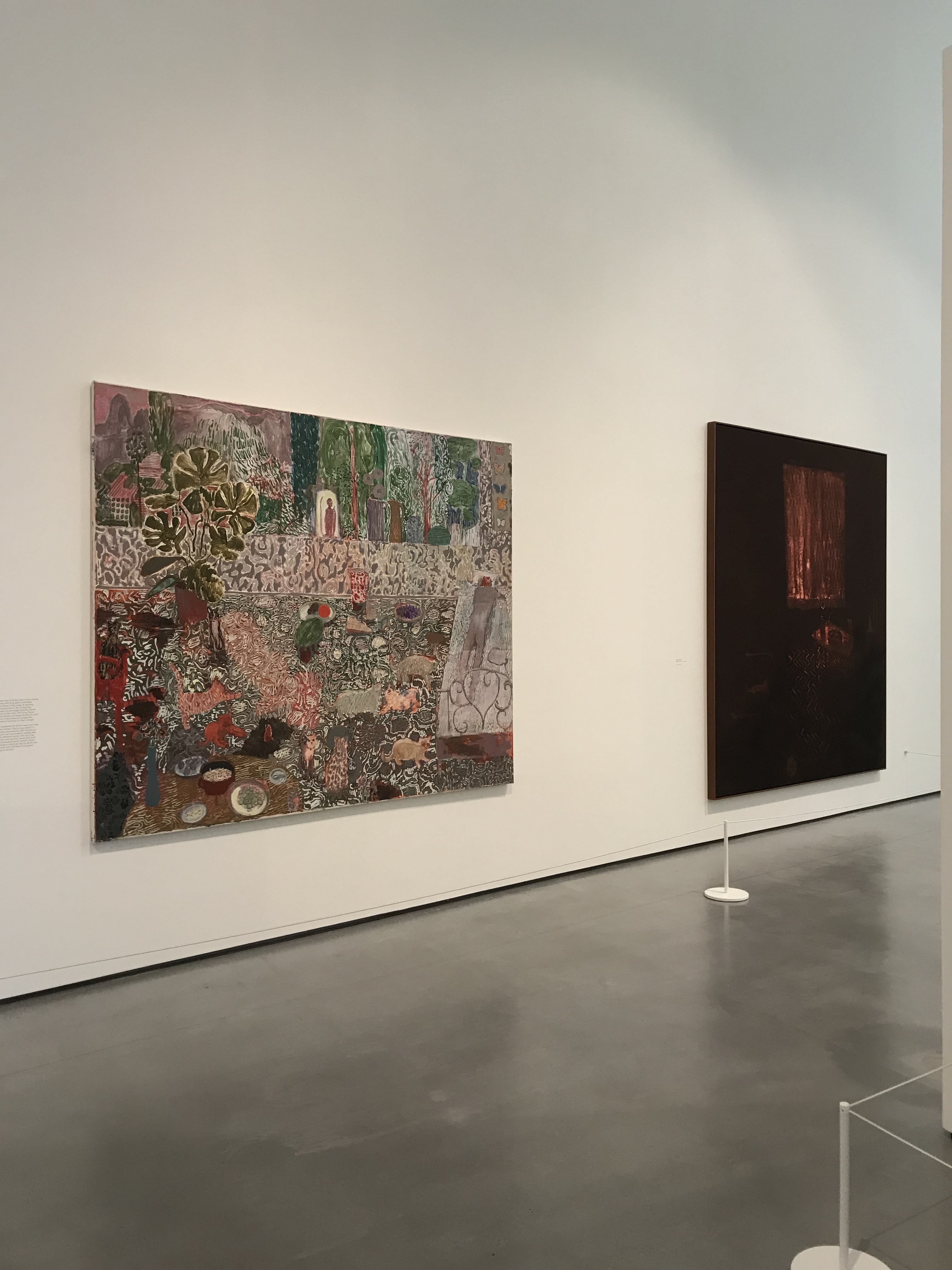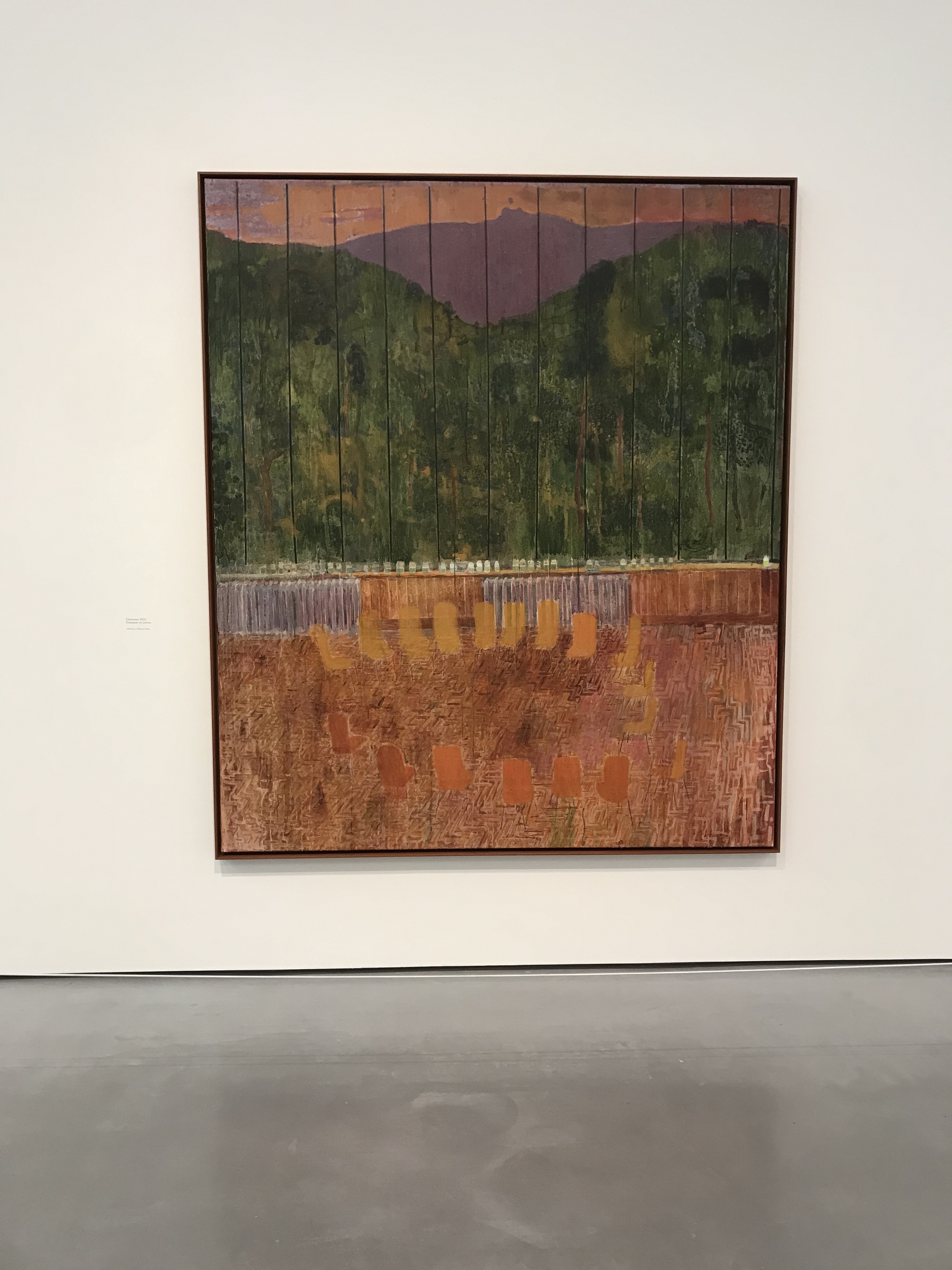Andrew Cranston - What Made you Stop Here?
Hepworth - Wakefield
25th November 2023 - 2nd June 2024
By Estelle Simpson
An exhibition chronicling the cosmic found just “under [the] nose” - Andrew Cranston fictionalises the enchantment that hides in plain sight in his richly evocative scenes. The magic formations of the everyday make the often benign mundanities mythological. The familiar becomes folklore. There is a wistful tonnage placed on these everyday tales, which are told in incredible big paintings but also intimitely rendered on linen-bound book covers, and smaller works. Each all demonstrate delicacy, visual nuance, and are rich in storytelling.
The paintings in the show still stalk my mind, a testament to their sheer impact, but also a reflection of the artist’s goal - to intimate the beauty burning in his memories of normal life. Animated with this luminescence, the maker’s obsession with colour emits these works which present phenomenal interpretations of the simplest subjects. Through sharing the paintings in this show, Cranston reveals how individual our perception is to each of us, which becomes a remarkable recording of how we all see the world in a unique way. He demonstrates a personal thrill found in colour and form, the potential he found in basic situations. Within these paintings you will rediscover or be made aware of the vividly intriguing world we live in, recalled and reimagined through the eyes of their storyteller, Cranston.
Great paintings can tell a story, and this is a cornerstone of Cranston’s oeuvre. He even embellishes book covers in oils, canvases which offer a historical basis in which captivating artworks are built on top. In a hyperactive and heated contemporary existence, painters such as Cranston prove the persistent grace of the medium which not only takes time to render, but also encourages stillness within those viewing. Further bringing attention to physicality, not only in the painting matter but also evoking the extraodinary opportunity to still engage with slower information modes such as books, which remain an intrinsic part of many of our lives. Examining the collection of tiny paintings, I was entraced by the level of expression brimming from their surfaces, an ode to the maker’s process of working on beyond 40 paintings at a time. This facilitates an approach to the canvas that means details are added as ideas emerge, allowing for careful consideration. This suggests a receptive dialogue between the artist and his painting, in which Cranston’s flexibility in adding or subtracting from each artwork can result in the most mindful and natural pieces when finished. Inevitably, as ideas are spread across many works due to this way of working, some appear more built, while others are lighter. Variety facilitates all to have a unique voice and spirit, all equally significant.
Cranston pulls from images embedded in the psyche. Specific geographical landmarks, often natural vistas, rivers, mountains, and wildlife. This demonstrates a relationship to his native areas from youth which is deeply in tune with the rhythms which make these areas sing a certain magic. Woods, lochs and industrial ghosts evoke the landscapes long inhabited by the artist, existing on within his mind’s eye. The hazy accents create a specific ambience in his paintings and could be a call back to the steam and smoke which filled the residential streets at a time when they shared space with factories. The sense of exile from an area which still draws us back in through memories of certain hallmarks is something which stands out in these paintings. While no longer residing physically within a place, recollections of it can retain a strong connection with the environment, as experienced at a particular time. Further, the idea of sharing stories of places is an act which encourages a deeper association with an area, despite not having touched base at the specific site for so long.
For Cranston, painting is a time machine. While memory seems a significant factor at play, the artist embraces the flawed nature of past reccounts. The malleability of memory, which increases over time, excites the works. Noticing this distortion and unreliability of memory allows us to exaggerate or change elements, something which makes memory a greatly imaginative tool for the artist. These themes result in the mudiness and murkiness which underpins his work with an enthrallingly furtive atmosphere. The reductive quality imbues each with a sereptitious nature, allowing viewers to project onto them their own legends. Cranston invests the work with an awareness of the complexity involved in experiences that stir emotions you can’t quite put your finger on. This slippery bond with our memories and past encounters make them no less important and transformative to us, as we find ourselves mythicizing these mundane events into fantasy.
The fish in the tiled pond eleiccit a particular memory for Cranston of Edinbrugh. The beauty of this image of the fish Cranston encountered at the ‘Chamber Street Museum’ was deeply implanted into his memory. However, as a viewer this motif feels recognisable despite not having a personal insight into his experience. Recreating his minds eye by gesturing at the dreaminess and magic of this sight creates an image which imprints itself on my spyche with as much vavacity as the real moment imprinted itself on Cranston. The way you tell a story is so important to how it affects those who listen. Here, he has amplified and enriched the picture to reflect its impact on him, departing a masterfully woven scene which commands the same response from the audience.
It is not surprising to see odes to Matisse or Vuillard mentioned in this exhibition. These works may be ostencibly borgeois in form, yet the boldness in decision making and raw expression imparted onto the canvas underly their timeless weight. Echoing the ruminations of the ‘Intimists’, Cranston protrays his percieved ‘cosmic shock’ found in mundaniety. A heightened awareness of normality means Cranston can grasp at mystical assets of existence. Phenomenal interpretations of even the simplest subjects are shared to help us understand the unique way Cranston interprets the world around him. The daily thrill he finds in colour and form, the potential found in quaint situations just under our nose. It reminds us as veiwers that the way we see the world and the things we find remarkability in are unique to us all.
These anecdotal paintings contain modern spirit but also have a sense of antiquity. Distemper may be used also by his contemporaries such as Doig, yet this material harks back to Vuillard. Distemper allows for an exploration of negative space as well as use of limited colours. It’s quality evokes a deteriorating or process of decomposition which complements themes of the loose nature of memory. The archaic character it gives works is in the same vein as an old Italian Fresco crumbling from a wall. This lucidity in paint work contrasts with a vital use of colour and form. It’s indentifiability stems from it’s modern use as a cheap alternative to decorate council flats and property exteriors walls, giving the paintings another layer of familiarity.
Areas of negative space created by whole colours, as Cranston uses flatness in a virtuous way, mirrors the spatial illusion of Matisse’s ‘The Red Studio’. The piece ‘Little Boy’ (2020) oozes of this hallucinatory drama. A concoction of distemper and bleach, featuring minimal paintwork. A self-quoted thrifty painter, Cranston’s mark making culminates as proof that an exquisite paintings, reminiscent of great Impressionists can be born from modest materials. This painting is brewing with nocturnal enchantment and the eerie quiet of the night.Focused on the unusual phenomenon of sleepwalking, it feels apt that the artist draws upon this delirious manipulation of form. Contemplating the way things are harder to visually decipher during the night, allowing for more imaginatory phantoms and thoughts to fill in the gaps of the darkness, this domestic scene sparks fantastical readings. Reflecting a “space in each day closer to dreaming,”, Cranston constructs the room incorporating large planes of colour akin to Matisse, so that furnishings and objects and room lines are implied of horizontals and verticals emerging from below colour fields, as the canvas hue beneath becomes the suplier of outlines. Evincing the features from the canvas layer belowreverses the figure ground relationship. In the same way Matisse shows disregard for linear perspective in ‘The Red Room’, Cranston still establishes a sense of an inhabitable space which maintains a triumphant sense of illusion. The mirage relfects the atmosphere of the night with immense potency.

